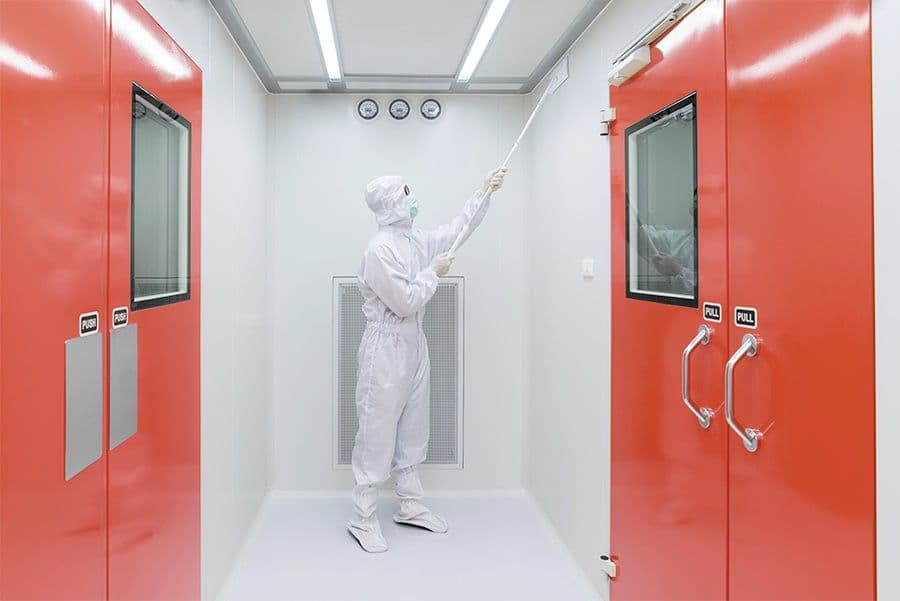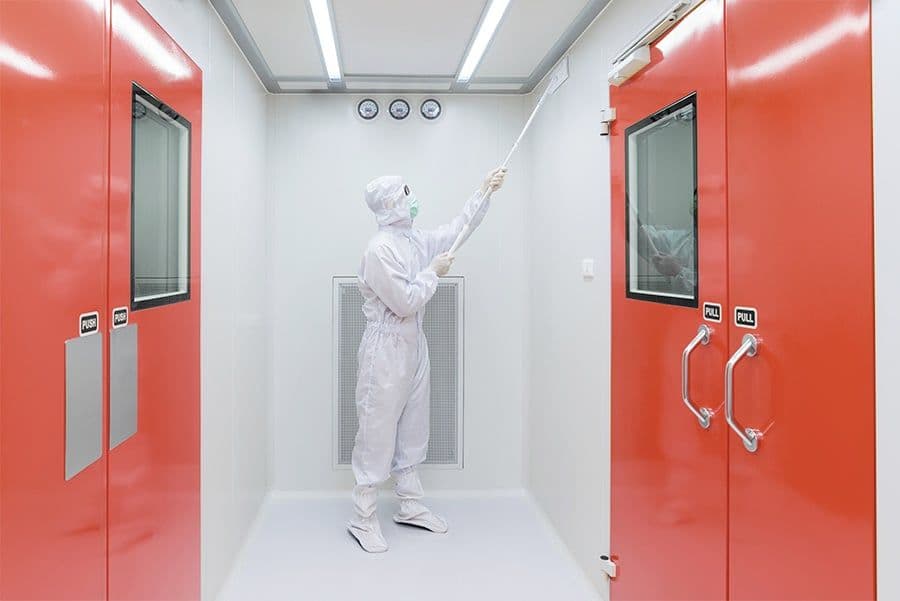

Cleanroom Gowning
Cleanroom Gowning
Firstly, you need to select the right PPE for your cleanroom. In all classification of cleanrooms, the garments should produce little or no particulate emission. This requires the fabric or material to be stable, possessing a high ability to resist breakdown.
- Your choice of PPE can be manufactured of woven and non-woven materials.
- Garments should have a minimum of seams; seams must firmly envelop the raw edge of the material. Sewing threads should be of a non-fi lament materials and resist linting.
- The PPE should be loose-fitting to eliminate abrasion against the clothing underneath.
- Garments should not have pockets, belts, or pleats.
There are a number of actions which should be actively avoided in a cleanroom as they will add particulate into the controlled area.
- Before entering the gowning room, remove all make up such as lipstick, blush, eye shadow, eye liner, mascara, powder, and any other cosmetic that is applied on the face or neck area.
- Fake eyelashes, hair extensions or nail extensions are not permitted in a cleanroom.
- No personnel wearing perfumes or aftershaves should be allowed in to the cleanroom.
- Hair combing should not be allowed in the gowning room.
- Personnel should wash their hands – and face if required. Hot air or lint-less wipes shall be used for drying. Do not use paper towels.
- No eating, drinking or smoking in the gowning room, including chewing gum
- Remove all jewellery before entering the gowning room.
- Do not enter cleanroom without complete cleanroom attire.
- Do not rub any exposed part of the face with a gloved hand. If this occurs, gloves must be changed.
- Movements such as scratching the head, rubbing hands, or similar type actions are to be avoided.
This is a suggested gowning sequence for an ISO 6 and ISO 5 cleanroom.
- Walk on a sticky mat to remove contaminants from street shoes.
- Street shoes are to be removed outside the gowning room.
- Put on slipper and enter into the gowning room.
- Remove slipper in gowning room.
- Put on hair net or hood to assure that all hair is tucked under head covering.
- Secure the face mask. Pull the bottom of the face mask down completely under chin and make sure it is covering the nose.
- Remove coverall from sealed packaging. Assure the upper part of the jumpsuit does not touch the floor. Put on the coverall, feet first and finally arms. NB. This is a tricky procedure and will need practice as part of the training.
- If you are using a separate hood, ensure that it is tucked underneath the coverall before zipping up the jumpsuit.
- Take the cleanroom footware (shoe cover or cleanroom boots) from the storage racks and put on as you move over the step over bench.
- If you are wearing boots ensure the legs of the jumpsuit are tucked in.
It is good practice to now perform a series of checks before entering the cleanroom
- Check to make sure that you have no hair exposed.
- Check that the face mask covers the nose and chin.
- Check to make sure that the hood is tucked underneath the jumpsuit collar.
Gloves
Some cleanrooms require double groves in which case the first set would have been put on as you enter the gowning room. You can now take one glove at a time from the glove bin. Handle gloves only by the cuffs. Pull glove cuff toward upper arm. Cover cuff of sleeve with gloves.
You are now ready to enter the Cleanroom it is worth reminding your operators as they enter to walk slowly and avoid creating air turbulence while in the cleanroom.